Skunks are plentiful around here. Especially in spring. You know the old saying, "It must be spring - there are dead skunks on the road." We see them year round, almost always at night, which makes sense, since they're nocturnal creatures.
This spring, as I've walked around Max's Garden, looking for newly emerging plants, I've smelled what I was certain had to be skunk musk. And then, of course, my first thought was, "Oh no, I hope one of the cats didn't get too close." But when I checked the cats later, they were all fine.
But every time I'd walk through the garden, there was that smell. And then I had a light bulb moment. The Fritillaria...
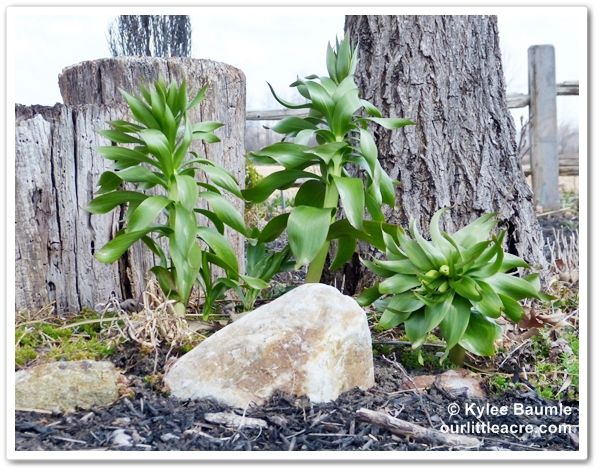 |
| Fritillaria imperialis 'Rubra Maxima' April 9, 2013 |
Fritillaria imperialis is known for its skunky smell. When I planted the gigantic bulbs in the fall of 2011, they were quite "fragrant" and I understood why scavengers leave them alone when digging for a snack in the garden. But I never thought the plant itself would smell like that.
Usually, a plant only has an odor that's detectable from a distance if it's in bloom. But not this one! From the time it first emerged from the ground, you could smell it. Now I'm a super sniffer, so maybe I can smell it before most people would, but it's pretty strong.
I didn't notice the odor last year when they emerged but none of the three plants bloomed last year either. Even though they were smelly before they bloomed this year, maybe they have to reach a certain age before they emit a strong odor. You know...like teenage boys.
In any case, I'm elated that this year, two of the three plants are blooming!! One seems to be stunted but has blooms, one isn't going to bloom, and the third one is just perfectly gorgeous.
Crown imperials can be tricky to grow. They prefer soil on the neutral to alkaline side (what we have) and it's imperative that they have good drainage. When I planted them, I made a little mound and I used mostly sand to fill the hole around and on top of the bulb.
They don't like to be moved, but we're going to have to move them later this year because they're beside a weeping willow tree that died and we have to take that out. We'll do that later in the fall and I'll replant them. I wouldn't be surprised if moving them causes them to not bloom next year.
Fritillaria imperialis are hardy bulbs in Zones 5-8 (some sites say 4-9) and can benefit from extra winter mulching in the colder zones. (I didn't.) Although the tallest of my plants is a little over two feet tall, they can grow to a height of as much as five feet. They are one of the more pricey bulbs. I bought them in the fall on sale at $7.99 each.
Worth every penny when I see their "bad hair day" colorful blooms...in spite of their not-so-sweet smell.










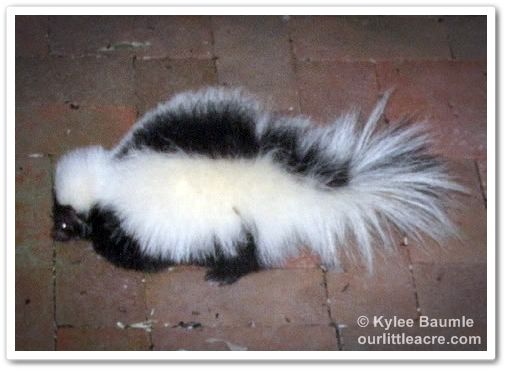

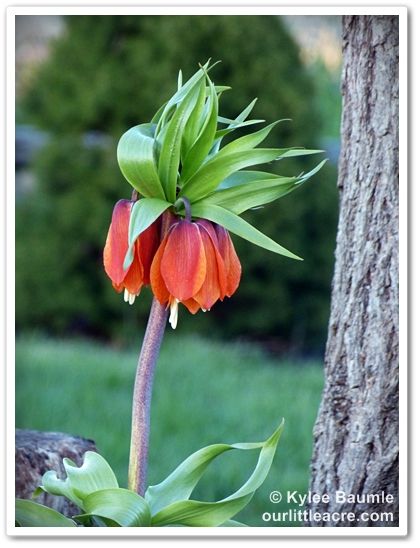
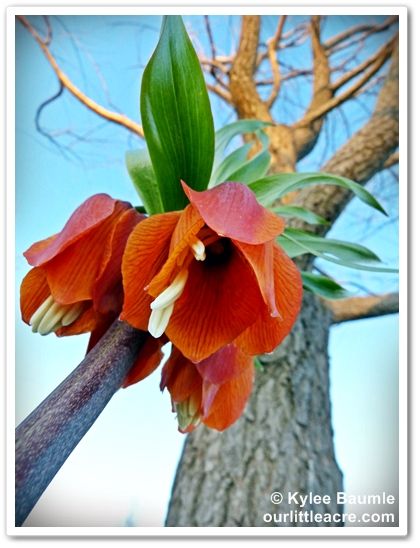
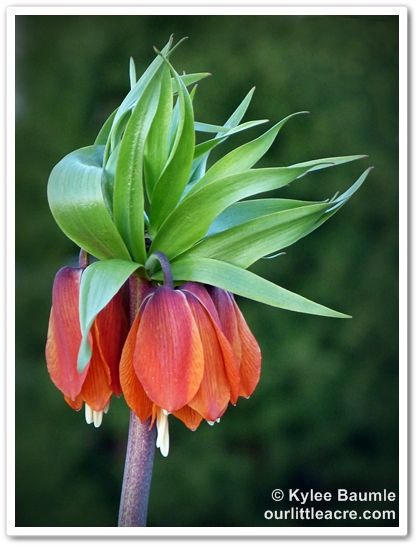






 "Bejeweled"
"Bejeweled"



2 comments:
Hey, my hair looked just like that when I woke up this morning....these are really pretty. So funny that they have such a bad smell. It reminds me of my Cleveland Pear tree. Everytime it blooms it smells like something died....however I forget every year and start walking around looking for some dead animal...then I remember...old age I guess!
Oh how pretty. I really like them but the bulbs always rot for me. I need a sunny spot where the drainage is good to grow some I think. Have a wonderful weekend.
Post a Comment